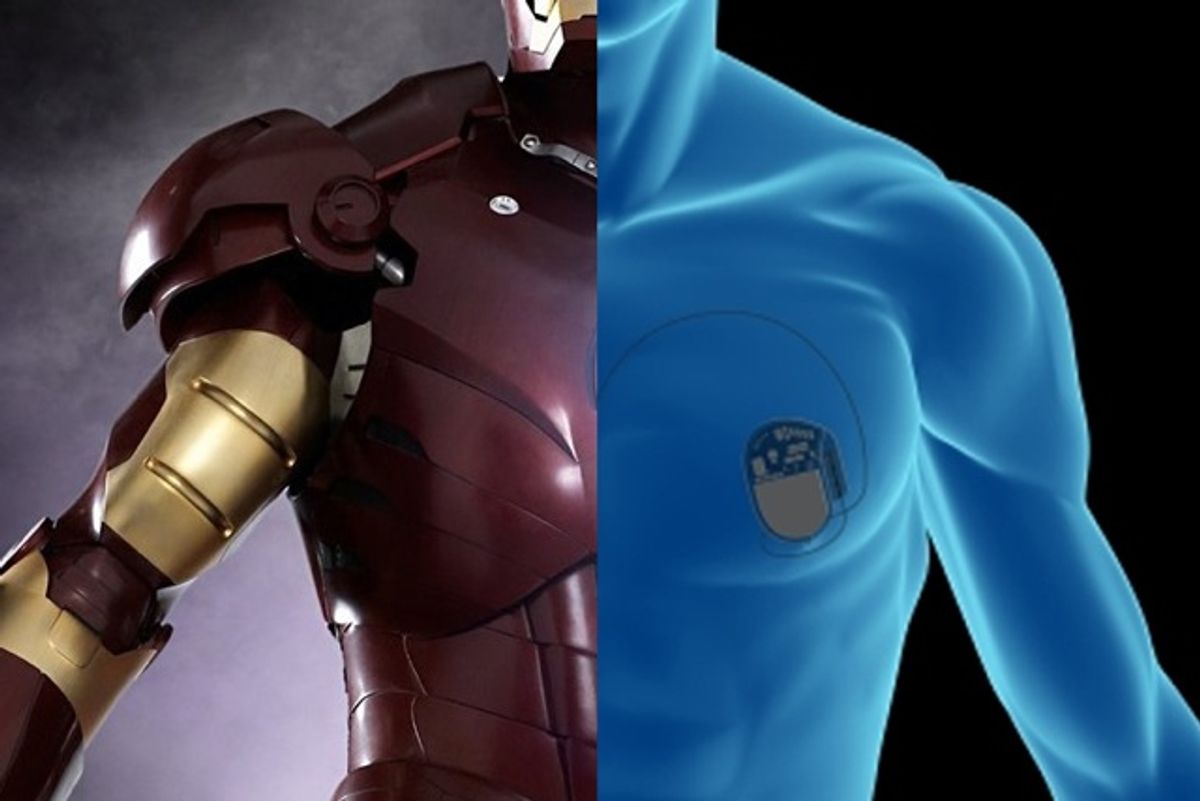After a close brush with death, it is not uncommon to make a list of the things you have yet to achieve, after which it is not uncommon to escape to the movies. It was in this context that I discovered I was not living up to my man-machine potential.
But sitting in a movie theater last weekend, it became clear what had drawn me (and a reluctant friend) to see "Iron Man 2." Iron Man's powers are generated from an implant designed to keep his weakened heart from failing. Of course, there are differences in our individual circumstances. Tony Stark, the man beneath the Iron Man armor, designed his own implant in an effort to save himself from a piece of shrapnel traveling to his heart. Not only that, he created the device using material provided by his unwitting captors (Asian Reds in the original "Tales of Suspense" comic; Middle Eastern terrorists in the movie). I am not nearly that clever; my device was built by Medtronic, a Minneapolis company that was started in a garage and is now the largest medical device company in the world. We have so much in common, and yet I have so many things to learn from him. Sure he's a little smoother in social situations, and better connected, yet at our core we share something rare. We are both cyborgs.
It was a bit of a surprise when this epiphany arrived. Five years ago, when I had my first pacemaker implanted in my chest, I went home in a stupor that led me to Google, which brought me to understand that I was indeed part man, part machine. "I am a cyborg," I announced to my freshman comp class. They were unimpressed. And as the years passed, I wasn't that impressed either.
Of course, there's a certain amount of social anxiety that comes with being part machine. In the new film, Tony masks how sick he is, measuring the growing toxicity of his blood using a pocket-size fingertip monitor similar to my own oximeter, though mine comes in a variety of designer colors and measures the oxygen levels in my blood. Convinced he is dying, Tony has a wild final birthday party, in which he embarrasses himself by getting drunk and then getting into an Iron Man fight with his best friend, Roadie. In the original comic series, things played out in a much more realistic, subtle fashion, with Tony excusing himself from dates with hot chicks in order to recharge himself by plugging into the razor socket of the nearest bathroom. Who among us hasn't done something similar?
"Iron Man 2" also introduces a new nemesis: Mickey Rourke as a sort of giant Russian defibrillator that runs around throwing bolts of electricity at our pacemaker hero. I've had similar experiences too; last month, outside my local gym, I was shocked back into rhythm with a jolt of electricity so strong that it blew me out of the stretcher restraints I was in. At the hospital afterward, technicians were able to download a record of the "incident" directly from my chest. It seemed there was no need to talk to me at all; they just needed to interface with the machine part of me, and I watched as reports squirted out from their souped-up laptop. Later, much later, I laid awake as they cut the old unit away, and just like Tony, I received a sophisticated upgrade to my chest. ("It's hard to know where to put them in a skinny person," I heard one doctor say. It was the first time I'd been called skinny in about 20 years.)
My new implant, the Concerto II (the original Concerto was found to be defective), can deliver an electric shock to my heart if an arrhythmia occurs, but more than that, it can communicate wirelessly with my doctor, can be reprogrammed, and even sound an alarm if necessary. It's also much larger than the previous one, and can be seen protruding slightly from my left pec. This is particularly noticeable if I'm wearing a T-shirt, and my current crop of students don't hesitate to interrupt class to point it out. "I can see your pacemaker now," they call out. But at least it's not as noticeable as Tony Stark's, which often glows blue through his form-fitting black T-shirt. Now, that's the kind of thing only Robert Downey Jr. can pull off.
More recently, in the rebooted Iron Man comics like "Extremis" and "Stark Resilient," Tony has chosen to continue his mechanical-magnetic enhancements, even though he could have gone on without the repulsor implant after his shrapnel was removed. He's even allowed this physiology to reorganize itself around the mechanics of his machinery. Marvel editor Alejandro Arbona told me, "a second heart ... the augmentation he subjected himself to has made him dependent on it for his continued existence." In my life, this is called "pacemaker syndrome," when the augmentation of electronic pulses weakens the heart so that it paradoxically requires more help from the pacemaker than it did in the beginning.
Would I, like Tony, choose to keep the implant after I no longer needed it to survive? Can I use the pacemaker-defibrillator to catapult myself to a bigger, better version of me?
Clearly, I have some work to do. I don't have a lavish, indestructible concrete palace on the coast. I don't have a pretty assistant named Pepper Potts. I have yet to save the world, or even my own town, from destruction at the hands of corporate evil. But I know now that as a real-life cyborg, all of these things are within reach.
Ken Foster is the author of a memoir, "The Dogs Who Found Me," a collection of stories, "The Kind I'm Likely to Get," and essays, "Dogs I Have Met."



Shares